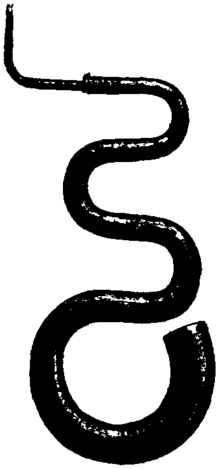Franco-Flemish School
The designation Franco-Flemish School (Ammer 2004; Broekema 1978, 273; Chase 2003, 13; D'Epiro and Pinkowish 2001, 253–54; Gillespie 1965, 27; Gleeson and Becker 1988, 106–11; Karp 2007; Lundberg 2012, 59; Porter 1986, 190; Wright and Fallows 2001), also called Netherlandish School, Burgundian School, Low Countries School, Flemish School, Dutch School, or Northern School, refers, somewhat imprecisely, to the style of polyphonic vocal music composition originating from France and from the Burgundian Netherlands in the 15th and 16th centuries as well as to the composers who wrote it. The spread of their technique, especially after the revolutionary development of printing, produced the first true international style since the unification of Gregorian chant in the 9th century. Franco-Flemish composers mainly wrote sacred music, primarily masses, motets, and hymns.
Term and controversy
Several generations of Renaissance composers from the region loosely known as the "Low Countries" (Imperial and French fiefs ruled in personal union by the House of Valois-Burgundy in the period from 1384 to 1482)—i.e. present-day Northern France, Belgium and the Southern Netherlands—are grouped under "Franco-Flemish School", though a teacher-student-relationship between them rarely existed. Most of these musicians were born in the thriving Burgundian provinces of Artois, Flanders, Brabant, Hainaut, or Limburg. Others were born in Northern and Central France, like Guillaume Faugues and Antoine Brumel who was one of the most influential composers of his generation. During periods of political and economic stability, the courts of the Burgundian dukes were a centre of cultural activity in Europe.
Franco-Flemish composers had their origins in ecclesiastical choir schools such as at the cathedrals and collegiate churches of Saint-Quentin, Arras, Valenciennes, Douai, Bourges, Liège, Tournai, Cambrai, Mons, Antwerp, Bruges, and Ghent, although they were famous for working elsewhere. Numerous musicians establish themselves in French court or moved to the European courts in Italy where they were called "I fiamminghi" or Oltremontani ("those from over the Alps") and Spain—notably in the Flemish chapel (capilla flamenca) of the Habsburgs, or to towns in Germany, and other parts of Europe—Poland, the Czech lands, Austria, Hungary, England, Sweden, Denmark, Saxony—carrying their styles with them. The exact centres shifted during this time, and by the end of the sixteenth century the focal point of the Western musical world had moved from the Low Countries to Italy.
To conclude, let us recall that the expression "Franco-Flemish" and the more biased one of "Dutch school" are still controversial among musicologists. They were not in effect at that time and seem to cover only part of the linguistic, political, territorial and historical reality.
Development
Following are five groups, or generations, that are sometimes distinguished in the Franco-Flemish/Netherlandish school. Development of this musical style was continuous, and these generations only provide useful reference points.
- The First generation (1420–1450), dominated by Jean Tapissier, Guillaume Du Fay, Gilles Binchois and Antoine Busnois; this group of composers is most often known as the Burgundian School. The origins of the style of the first generation embraces both earlier Burgundian traditions and also Italian and English styles. For example, in 1442, the poet Martin le Franc praised Binchois and Dufay for following Dunstaple in adopting the contenance angloise ("English character").
- The Second generation (1450–1485), with Ockeghem as its main exponent, others including Orto, Compère, Prioris, Agricola, Caron, Faugues, Regis and Tinctoris.
- The Third generation (1480–1520): Jean Mouton, Obrecht, de la Rue, Isaac, Brumel, Févin, Pipelare, Richafort, Divitis, and most significantly Josquin des Prez.
- The Fourth generation (1520–1560): Gombert, Crecquillon, Manchicourt, Arcadelt, Rore, Willaert, Courtois and Clemens non Papa.
- The Fifth generation (1560–1615/20): Lassus, de Monte, Vaet, Regnart, Luython, Wert, de Macque, Claude Goudimel and Rogier. By this time, many of the composers of polyphonic music were native to Italy and other countries: the Netherlandish style had naturalized on foreign soil, and become a true European style.

The Franco-Flemish motet
Composed between 1450 and 1520, these motets were typically written for four voices, with all voices being equal. They often exhibit thick, dark textures, with an extended low range. The most notable composers of this style include Ockeghem and Josquin, whose De profundis clamavi ad te, composed between 1500 and 1521, provides a good example.
See also
- Category:Franco-Flemish composers
References
- Gut, Serge. 1968. "A propos des polyphonistes de la Renaissance : franco-flamand ou néerlandais". Revue du nord.
- Ammer, Christine. "Flemish School". The Facts on File Dictionary of Music, fourth edition. New York: Facts on File, Inc. ISBN 9780816052660.
- Broekema, Andrew J. 1978. The Music Listener. Dubuque: W. C. Brown Company. ISBN 9780697034007.
- Chase, Robert. 2003. Dies Irae: A Guide to Requiem Music. Lanham, MD: Scarecrow Press. ISBN 978-0-8108-4664-7.
- D'Epiro, Peter, and Mary Desmond Pinkowish. 2001. Sprezzatura: Fifty Ways Italian Genius Shaped the World. New York: Anchor Books. ISBN 0-385-72019-X.
- Gillespie, John. 1965. Five Centuries of Keyboard Music. Belmont, CA: Wadsworth Publishing Company, Inc.
- Gleeson, Harold, and Warren Becker. 1988. Music in the Middle Ages and Renaissance, third edition. Music Literature Outline Series 1. [S.l.]: Frangipani Press. ISBN 0-88284-379-6.
- Karp, Theodore. 2007. "Franco-Netherlandish School". Encyclopaedia Britannica, online edition (accessed 12 January 2018).
- Lundberg, Mattias. 2012. Tonus Peregrinus: The History of a Psalm-Tone and Its Use in Polyphonic Music. Farnham, Surrey: Ashgate Publishing Limited; Burlington, VT: Ashgate Publishing Company. ISBN 978-1-4094-0786-7.
- Porter, Steven. 1986. Music: A Comprehensive Introduction: A Complete Music Appreciation Course. New York: Excelsior Music Publishing Co. ISBN 0-935016-81-3.
- Wright, Craig, and David Fallows. 2001. "Burgundy". The New Grove Dictionary of Music and Musicians, second edition, edited by Stanley Sadie and John Tyrrell. London: Macmillan Publishers.
- The New Harvard Dictionary of Music.
- A History of Music and Musical Style, by Homer Ulrich & Paul Pisk (1963). New York: Harcourt Brace Jovanovich. ISBN 0-15-537720-5.
- Volledige namenlijst van all polyfonisten uit de Nederlanden (1400–1600) [Complete List of Names of Polyphonists from the Netherlands born between 1400 and 1600].
